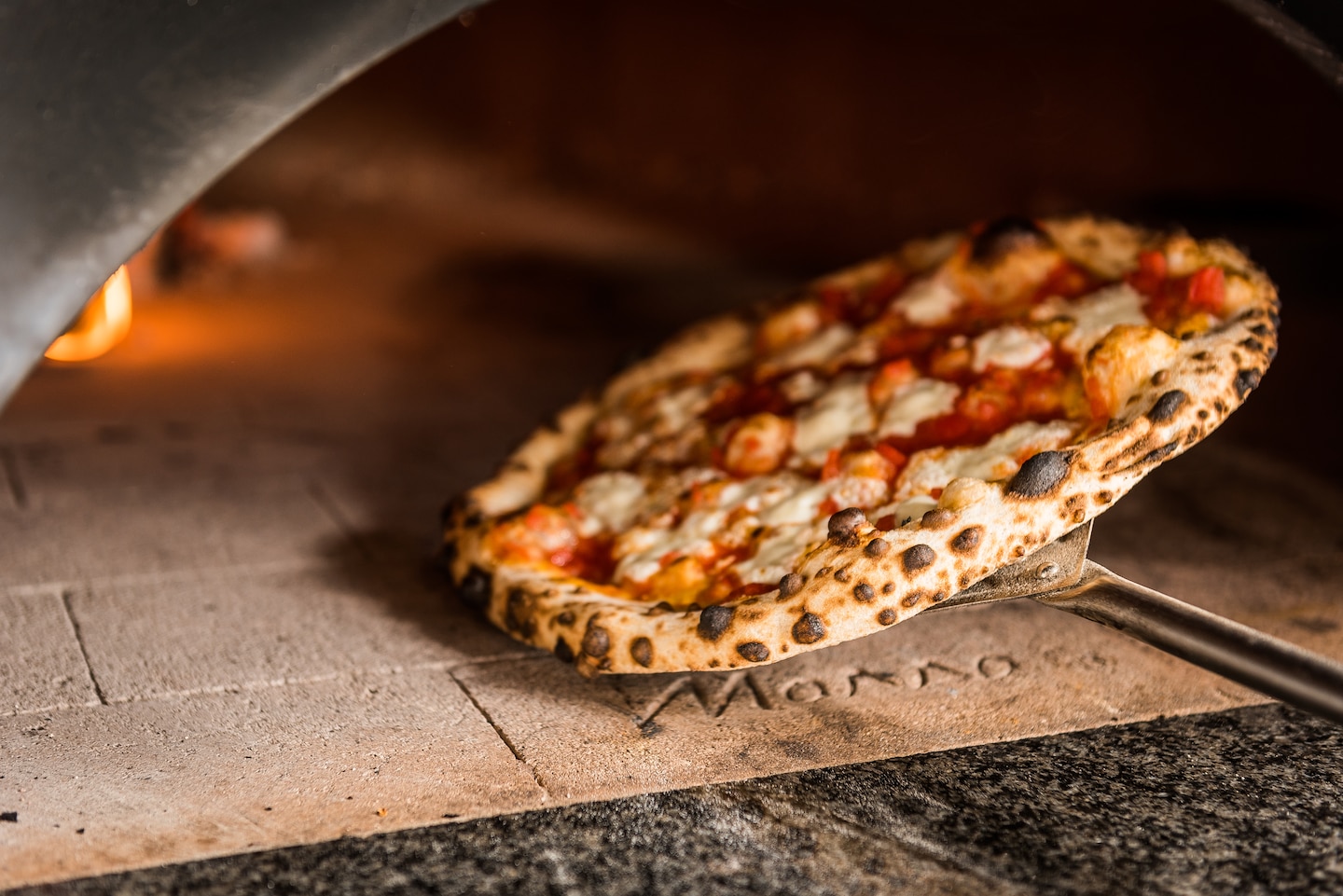The pandemic has hit restaurants hard, but experts say the ‘ghost food hall’ concept might save them

“I realized that my restaurants — and any restaurants, in fact — were sort of doomed in the way they do business,” Gordon said.
Then he saw that takeout and delivery at Little Beast, his family-friendly pizzeria in the Chevy Chase neighborhood, was earning 110 percent of the restaurant’s pre-pandemic sales. Dine-in service at any of his restaurants was unlikely to provide adequate revenue for months, even years, Gordon mused, but a takeout and delivery-oriented establishment might thrive.
Enter Ghostline, an establishment that will gather several chefs cooking in different styles to offer takeout, delivery and limited patio seating in the Glover Park neighborhood starting Sept. 1, without serving customers inside. This “ghost food hall” is among a few food establishments whose owners are betting on an unusual business model to carry them through a crisis shaking the foundations of the restaurant industry.
Ghost food halls combine “ghost kitchens” — which serve meals exclusively by delivery — and food halls, both of which have become popular in recent years, said Alex Susskind, associate dean for academic affairs at the Cornell School of Hotel Administration. With the pandemic making indoor dining less safe than before, he said many people who were skeptical of takeout and delivery are suddenly using those services frequently and finding themselves hungry for new food options.
“And let’s be real,” Susskind said. “People get tired of pizza delivery.”
In addition to Ghostline, California-based Kitchen United Mix and Click Virtual Food Hall in Houston appear to be among the only other ghost food halls in the country. Neither responded to a request for comment.
Making a kitchen or food hall “ghost” is about reducing operating expenses by forgoing service staff and an attractive interior, Susskind said. He said owners have to factor in delivery costs and, like Gordon, may choose to employ their own drivers to get more polished service and save the 20 percent or higher fees charged by third-party companies such as Uber Eats. Workers for ghost food halls in cities can also deliver by bicycle.
Because most ghost food establishments offer only delivery, Susskind said owners usually choose an affordable location that may or may not be in a population-dense area. Gordon said his food hall will be on one of the city’s main arteries, Wisconsin Avenue NW, to be convenient for people who want to get takeout or sit on the patio, which has room for about 50 people to remain at a social distance. Driving in person to pick up food, he said, might be someone’s only entertainment for the evening amid the pandemic.
Gordon expects about 80 percent of his business to come from takeout, as well as delivery within a two-to-three-mile radius including downtown offices where workers may order food when they return to the buildings. He removed half of the existing seating in the ghost food hall’s building — formerly a different restaurant — to create more kitchen space and has reserved three nearby parking spots for delivery drivers and takeout customers.
Customers who eat outside will order at their tables, but with less contact than they would get at a restaurant before the pandemic. The idea, Gordon said, is to maintain some element of the typical restaurant experience within this atypical model.
Gathering several chefs at a ghost food hall makes the project cheaper and decreases the financial risk, said Rick Camac, dean of restaurant and hospitality management at the Institute of Culinary Education. Ghost food halls can rely on limited menus, lean staffing and commissary kitchens where cooks share bulk items like oil and salt.
Although the coronavirus hastened the rise of food-industry trends already in the making, Camac said the concept of ghost food halls will probably remain successful after the pandemic wanes. Fine dining has already been declining for years, he said, and months of self-quarantine have changed people’s perception of what makes a good meal.
“We now think it’s more reasonable to spend $100 on delivery and eat in front of a great movie,” Camac said. “By no means does it mean that this is the end of restaurants as we know it, but we have turned this corner that I don’t think we ever thought we were going to turn.”
As Camac sees it, the only potential sticking point in opening a ghost food hall is coordination. This kind of establishment involves running not just one restaurant, he said, but multiple restaurants within a restaurant. Neglecting to choose the right management team creates the potential for failure, he said.
Still, Camac, Susskind and Gordon all said they expect many restaurateurs to follow in Gordon’s footsteps.
The business model, Gordon said, “meets a lot of the requirements of the time.” Multiple chefs contribute to the costs of rent, packaging and delivery, making the enterprise much less expensive than it would be for any chef striking out on their own. Already, Gordon said having the leverage of multiple chefs allowed them to drive down their credit-card processing fee from 3 percent to 2.5 percent.
Gordon thinks the idea is certainly worth a try. “I think restaurants and chefs are going to get desperate soon.”
Correction: A previous version of this story misstated the city where Click Virtual Food Hall is located. It is in Houston.






